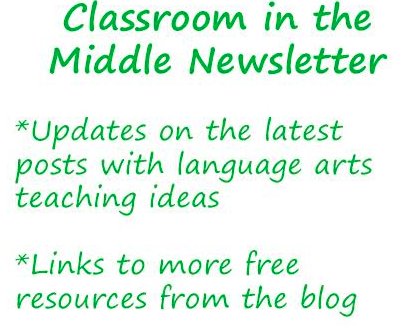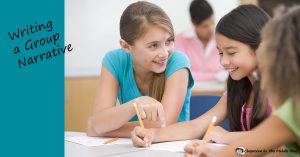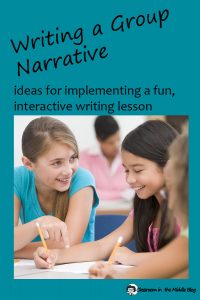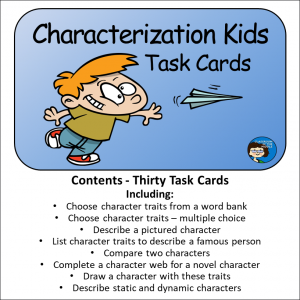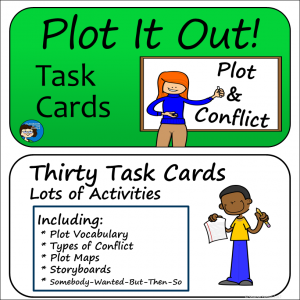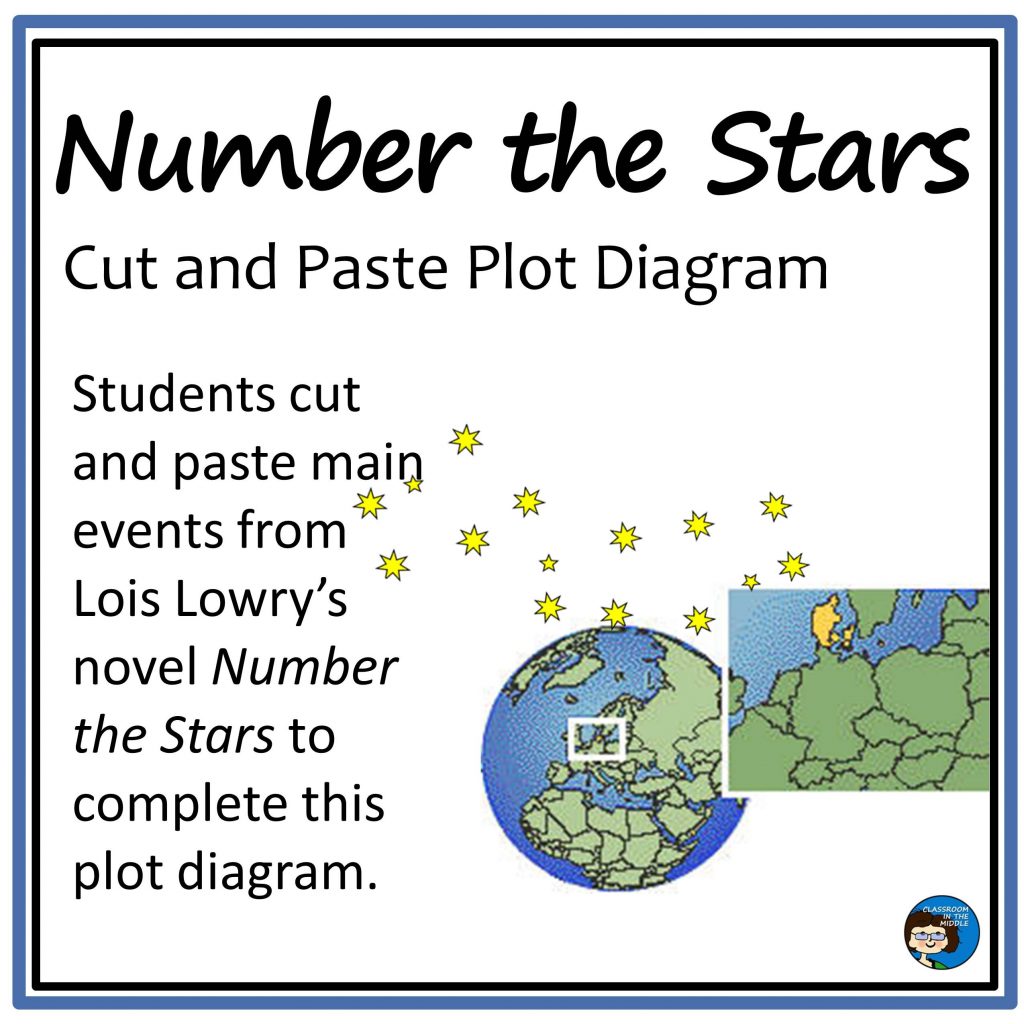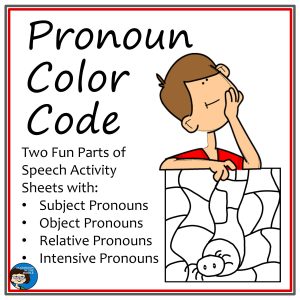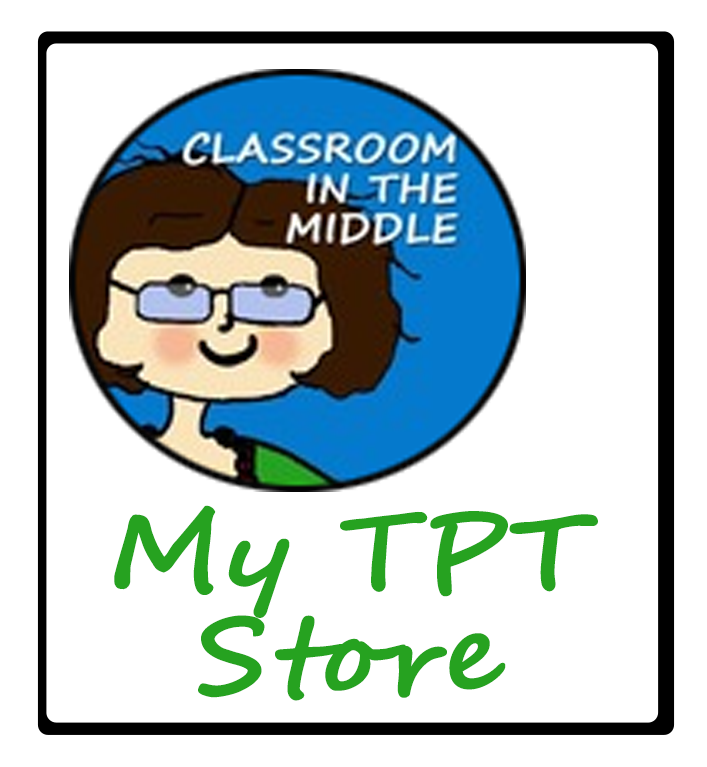A group writing lesson is a great activity for adding a little fun and class participation into a topic that is usually done on a more individual basis. Group writing can be done as a whole class or in small groups; either way provides an engaging lesson for middle school or upper elementary kids.
Narrative writing is a great choice for a group writing activity. It’s easy for everyone to participate and work together since there’s no research involved and no taking sides. And it’s a great way to review both the steps of the writing process and the elements of a story.
Any time of the year works fine for a group writing, but I always liked doing one near the end of the year, just for fun. Another good time is just after reviewing the writing process or the elements of a story. Use writing task cards, story element task cards, or other review materials to refresh students’ memories about each step, and then write as a group to put it all together.
Group writings can be done as a whole class; this way is especially fun at the end of the school year. It can also be done in small groups with each group working on one story. Either way, take the time to do all the steps – that’s where the fun and interaction comes in most.
Prewriting
Here the group decides on their characters, their setting, and the main conflict in their story. Have each group member submit ideas, and then decide as a group which ones to use. Small groups can choose elements that they think will fit together well to make a coherent story. With a large group, you can do the same thing, or you can throw in lots of varied characters and settings to make a just-for-fun, free-flowing narrative.
Writing
As a group, write out the story with actions suggested by all of the members. Have one group member, or the teacher, monitor to make sure that the conflict and it’s resolution are featured. Even with this guidance, the group is sure to end up with a narrative that needs work – perfect for revising in the next step!
Revising
Cut, organize, add. That’s the order I would use. Start by cutting out sentences that just don’t fit with the rest. Then organize what’s left into the best narrative possible. Finally add details, transitions, and descriptive language wherever there’s a need for it.
Proofreading
As with individual writings, it’s always a good idea to proofread. For a group writing, you could do the proofreading on a second day in which you give each member of the group a copy of what the group has written so far to proof. Then the group would get together and compare notes. Also, if students know they are going to be proofreading later, hopefully they won’t be bothering the group’s scribe so much whenever he or she makes a spelling mistake. As she’s writing the draft, the scribe can just say, “We’ll fix it when we proofread.”
Publishing
For a whole class narrative, the kids will still enjoy seeing their final product in print, even though they’ve all already seen it. Maybe it could be included in a class newsletter or an end-of-year booklet. And of course, with group stories, the groups will be anxious to share their writing with the class, either in writing or orally.
Sometimes to kids, and to adults, writing can seem like hard work. Writing a group story can provide a welcome change of pace.
Related Resources

